Articles of 2009
The History Of Boxing Cards
“I’ll trade you a Mike Tyson and Rocky Marciano for a Muhammad Ali.”
I collected sports card growing up and never heard these words. In its 140-year existence, sports card trading has centered around baseball, football and basketball; boxing is generally an afterthought even though some of the first sports trading cards ever produced were of prizefighters.
“Boxing card history is very similar to baseball card history,” says Adam S. Warshaw, author of “America’s Great Boxing Cards,” a boxing card encyclopedia and checklist.
Both appeared in the 1860s, the earliest boxing card on record being one of John C. Heenan, the former American Heavyweight Champion, which was issued by photographer Charles D. Fredericks in the 1860s.
“The card was commercially produced and commercially sold and that’s what we’re defining it as,” says Warshaw. “We can pin down that it was issued pre-1870 because the copyright notice on it contains an old format of copyright notice that was discontinued in 1870.”
The first time boxers actually appeared in a sports card set was in 1886, when Goodwin and Co. issued cards of Jim Carney, Jack McAuliffe and Jem Smith, with its Old Judge Cigarettes brand. From 1886 to 1895, a number of tobacco companies, including Lorillard and Duke and Sons, issued cards of boxers and other sports figures with their products.
The first nationally set was issued by Allen and Ginter Cigarettes in 1887. The set featured ten pugilists, including John L. Sullivan and the Nonpareil Jack Dempsey, along the top baseball players, oarsmen, wrestlers, rifle shooters, and billiard players and pool players of that era.
“The 1887 Allen and Ginter issue is the most common [mass-produced] 19th Century set, so it is attainable. Each card is made with really sturdy stock that has held up well over the years and a checklist on the back so assembling a set in very nice condition is achievable,” says Warshaw.
In 1890, the majority of tobacco companies were merged to form the American Tobacco Company, eventually bringing tobacco card production to halt for about 15 years. Boxing card production picked up in 1909 not only with tobacco but now candy products as well. Both the American Caramel Candy Company and Philadelphia Caramel Candy were two of the companies that produced sets during this period.
“From 1909 to 1912, hundreds of boxing cards were issued. That period was probably the heyday of the whole card issuance,” says Warshaw.
Boxing card production slowed again entering the 1920s. The most notable card production during that decade was from the Exhibit Supply Company who issued boxing cards out of arcade machines and would continue to do so for 50 years. Any additional boxing card production leading up until World War II was sporadic and regional.
After the war, two major sets were issued by chewing gum manufacturers in what was the swan song of boxing card production. The first came in 1948 and included the rarest boxing card in history, the 1948 Leaf Rocky Graziano. The Leaf set contains 50 cards, 49 of which include Jack Dempsey, Joe Louis and John L. Sullivan and are attainable by collectors. The Graziano, however, was likely never issued in gum packs and only three or four are in existence today. Whether the limited production was the result of Graziano’s concerns over the use of his likeness or his troubles with the boxing commission remains uncertain. Regardless, an issue of the card went for $27,000 on eBay in 2007. The sum is not so shocking when compared to the 1909 T206 Honus Wagner, the most sought after baseball card in the world, which sold for $2.8 million in 2007.
In 1951, Topps issued its Ringside set — a 96-card tribute set to the legends and current stars in the sport. Topps had also issued a Magic set in 1948, which featured everything and everyone from boxers to football players to military leaders to landmarks.
“In the 1950s, we had just started producing cards so we were trying a lot of different things,” says Clay Luraschi, Director of Public Relations for Topps. “It was a different era in boxing too. You had a lot more people interested in boxing trading cards.”
Very few companies have followed suit since the release of those sets. In the early 1990s, three brands, Kayo, All World and Ring Lords, issued boxing card sets. However, the release was likely spurred by the interest in Tyson at the time and the cards were so mass-produced that they are not sought by collectors.
So why such little interest in boxing cards? Since boxing and baseball cards started out similarly, one’s first hunch is that the baseball card production exploded around the time the sport eclipsed boxing in popularity, but according to Warshaw the timing just isn’t right.
“Boxing was probably the number two sport all the way into the TV age and yet the boxing card production tapered off dramatically after 1915 or so,” says Warshaw.
While it was extremely popular, boxing was still controversial at the turn of the century as different state legislatures were outlawing the sport periodically and ring fatalities were higher. When one also considers the fact that sports cards were generally marketed to kids as giveaways with gum or candy, one can see how companies chose baseball over boxing.
This may also help explain why no major card sets were produced in the U.S. during the 1970s, despite a wealth of superstars. While Ali is now an icon and was the most well-known athlete in the world at the time, he was also the most controversial figure and a risk for sports card companies.
In 2006, Topps issued cards of Tyson and Leon Spinks in its first Allen and Ginter set, which pays tribute to the 1887 issue, and has included cards of other boxers each of the following sets. Topps has also issued a number of boxing cards with its Co-Signers series, which features high-end, autographed cards of famous athletes. Another company, Ring Kings, recently issued a set celebrating the linear progression of the heavyweight title from John L. Sullivan to Jack Dempsey and has more limited sets in the works.
Despite this resurgence, it is unlikely that we will ever see boxing cards traded in packs in the same manner as baseball cards. Unlike Major League Baseball, boxing does not have an association which represents all of its athletes and enables sports cards companies like Topps and Upper Deck to sign licensing agreements covering all players. Each boxing card requires an individual contract with the fighter. To warrant such legwork for a 300 or 400 card set, a sport must have a lot of superstars.
“There are definitely a lot of worthy fighters now but I don’t know if there are enough big-name, marketable guys that could carry an entire product for us to mass produce and put on the shelves across the country,” says Luraschi.
But for sports card and boxing enthusiasts, there are enough individual high-end cards – both modern and rare – to make collecting enjoyable. Also, if purchasing rare baseball cards is out of one’s price range, collecting boxing cards may be a worthy alternative.
“I only know of one or two cards that have crossed the $20,000 threshold,” says Warshaw. “To see a sale of above $4,000 or $5,000 is very rare. You’re only talking about the elite cards in the industry.”
-

 Featured Articles3 weeks ago
Featured Articles3 weeks agoAvila Perspective, Chap. 330: Matchroom in New York plus the Latest on Canelo-Crawford
-
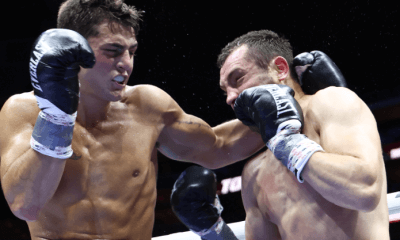
 Featured Articles2 weeks ago
Featured Articles2 weeks agoVito Mielnicki Jr Whitewashes Kamil Gardzielik Before the Home Folks in Newark
-
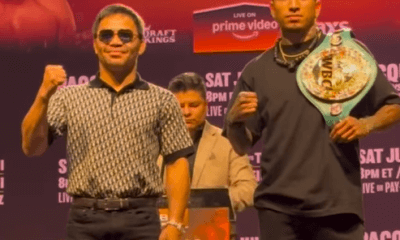
 Featured Articles4 weeks ago
Featured Articles4 weeks agoAvila Perspective, Chap 329: Pacquiao is Back, Fabio in England and More
-
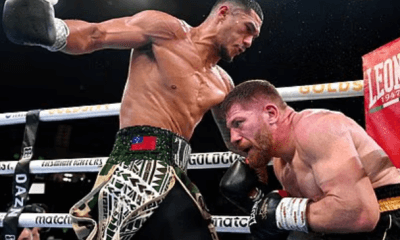
 Featured Articles4 weeks ago
Featured Articles4 weeks agoOpetaia and Nakatani Crush Overmatched Foes, Capping Off a Wild Boxing Weekend
-

 Featured Articles3 weeks ago
Featured Articles3 weeks agoCatching Up with Clay Moyle Who Talks About His Massive Collection of Boxing Books
-

 Featured Articles4 weeks ago
Featured Articles4 weeks agoFabio Wardley Comes from Behind to KO Justis Huni
-
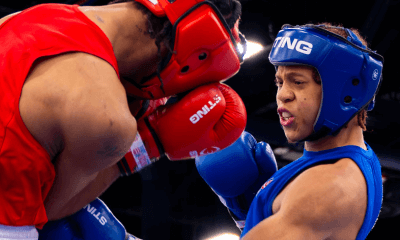
 Featured Articles1 week ago
Featured Articles1 week agoMore Medals for Hawaii’s Patricio Family at the USA Boxing Summer Festival
-
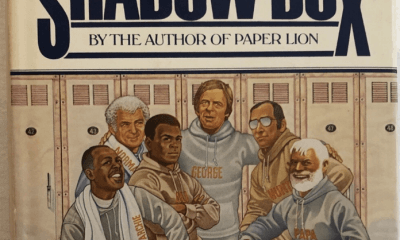
 Featured Articles4 weeks ago
Featured Articles4 weeks agoDelving into ‘Hoopla’ with Notes on Books by George Plimpton and Joyce Carol Oates
















